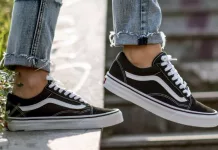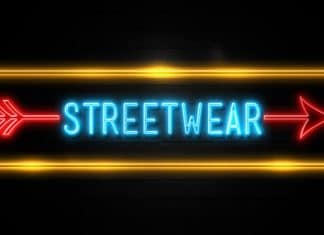
First Published: 5th December 2022, written by Olivia Doonan | Last Updated on 6th January 2024 | Reviewed and Edited by Chloe Safilo
You might be wondering what is the difference between Street style and Streetwear, which seem the same but are both individual styles that emphasize self-expression. The fashion industry welcomes all demographics and today’s street fashion trends are dictated by time. Every day, fashion cultures evolve throughout the world. Whether in Europe, Asia or the United States, people can see fashions, styles, and individuality on the streets, in the office, and classroom.
Street fashion and streetwear clothing have both been created for the average buyer and celebrities. A journalist or style icon may reference the two forms of fashion to present an idea to their audience. As new trends emerge, time passes, and seasons change, streetwear has become big business and influencing high fashion.
They are two distinct styles that have been gaining popularity in recent years. While they may seem similar at first glance, there is a major difference between street style and streetwear. British streetwear brands tend to cover both, but it’s good to cover them in depth.

What is street style?
Street style, also known as urban style, is all about originality, self-expression, and comfort. It’s the mainstream fashion that is all about wearing what you love and what speaks to you personally.
Hip-hop culture and its clothing’s attraction to the young demographic has led to the development of the street style. Hip-hop reached its pinnacle in the 1990s and gave rise to urban wear as the audience of music lovers found it enticing.
Major clothing companies including haute couture and luxury fashion houses have created a booming urban clothing market. People are attracted to street style because it includes loose-fitting clothing, simple colours, trainers, bold jewellery of all kinds, and a ghetto look that has been transformed into a fashionable, modern look.
Street style clothing as a category has evolved through time into a distinctive look that also reflects personality. It has been described as elegant and alluring. It has always been about the appearance and upscale clothing lines that feature music, culture, and distinctive differences.
In recent years, urban wear has expanded to encompass a larger range of casual clothing, from baggy jeans and loose shirts to workplace clothes, from city streets to suburban areas, and through all ethnic communities.
Companies are working to preserve the unique character of street fashion by targeting mass consumers and branding their goods. As a result, the urban style has grown to be a diverse blend of streetwear, luxury, hip-hop, other genres, and the new age lifestyle.

What is streetwear?
Streetwear style, on the other hand, is much more about trend-driven fashion, with a focus on street culture, hip-hop fashion, and popular youth culture. Streetwear brands often features more branded items and bolder colours and patterns. Both styles have their own unique appeal, so it’s up to the individual to decide which one is right for them.
Usually, the hottest trends are typically taken directly off the runway. As a result, rival retail outlets start to brand the product, which then becomes the latest trendy craze. Daily activities and organised outings like going to work, seeing a movie, going out to lunch or gym are all impacted by street style.
You also have to remember that money is an issue here, because if everyone had the ability to purchase garments off the runway, streetwear would not exist. Streetwear and its style are influential and inspirational to consumers and the world at large. The style does not necessarily reflect the current clothing fashion and trends of the moment.
The main factors influencing the spread of streetwear clothing are social networks and the numerous industry events in which individuals participate. Photos, DIY projects, and articles from magazines and newspapers all serve to inspire people to try their hand at streetwear.
The fashion industry has been impacted by the history and development of both street style and street wear fashion styles. The use of mass social media and living in the digital age has enabled people to openly display their creativity and style, fuelling the hype. Designers, consumers, bloggers, and everyone else are constantly aware of the latest fashions, styles, and themes throughout every season.
What clothes are considered a streetwear style?
Streetwear style typically includes clothing pieces that are inspired by urban culture, street fashion, and youth subcultures. So we are talking:
- Hoodies (commonly oversized or fitted hooded sweatshirts, often featuring bold graphics, logos, or branding)
- T-Shirts (graphic tees with unique designs, slogans, or iconic logos from brands or artists)
- Sneakers (shoes/trainers from popular streetwear brands like Nike, Adidas, Jordan, or Vans)
- Tracksuits and joggers (so comfortable, tapered pants with an elastic waistband, often featuring streetwear-inspired details like zippers, cargo pants pockets, or drawstrings).
- Denim (distressed or ripped jeans, denim jackets, or vests that add an edgy element to the streetwear look).
- Baseball Caps and Beanies (snapback caps, fitted hats, or beanies with logos or embroidered designs, often worn with the brim facing forward or backward)
- Bomber Jacket (lightweight fabric, zip-up jackets with a slightly oversized fit, typically featuring bold colours, patterns, or patches)
- Accessories like socks, bags, sunglasses and jewellery.
Often these are from known Streetwear Brands like Supreme, Off-White, Bape, Palace, Kith, or Stüssy, to more vintage like Nike and Adidas, all are often associated with the streetwear style or the skate parks. And they can range from apparel with an edgy aesthetic to an athleisure style.
Tips for styling streetwear
Streetwear is all about comfortable and casual clothing. Invest in staple pieces like oversized t-shirts, hoodies, joggers, and sneakers. These items provide a solid foundation for building your streetwear outfits.
Streetwear is known for its eclectic and diverse nature. Don’t be afraid to experiment with different styles and patterns. Mix high-end designer pieces with thrifted finds or vintage items to create a unique and personalized look.
Layering is a common technique in streetwear fashion. Combine different textures and lengths to add depth and interest to your outfit. For example, layer a longline t-shirt under a hoodie and pair it with a bomber jacket or denim jacket.
Accessories play a crucial role in completing a streetwear look. Consider adding a snapback hat, beanie, sunglasses, or a statement chunky necklace to enhance your outfit.
Sneakers are a must-have in streetwear fashion. Invest in a few pairs of trendy trainers in different colours and styles to compliment your colour scheme.
Streetwear is all about the little details that make your outfit stand out. So look for unique prints, embroidery, patches, or logos on your clothing pieces. These small details can make a big difference in your overall look. You can look at old school hip hop stars for inspiration.
















































